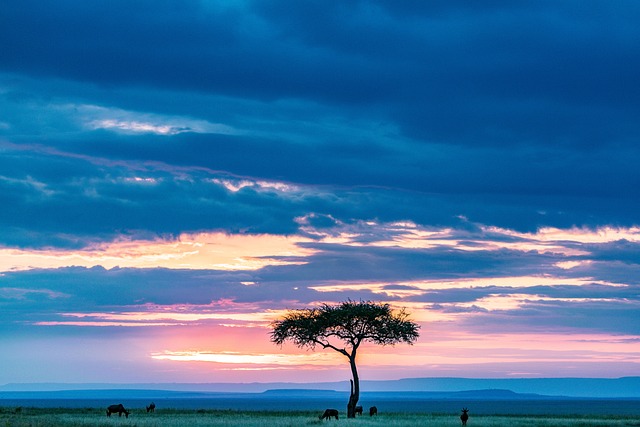
Maasai Mara National Reserve in Kenya is one of the most renowned and breathtaking wildlife destinations in the world. Known for its stunning landscapes, diverse ecosystems, and incredible wildlife, including the Big Five, Maasai Mara offers an unparalleled safari experience. This detailed guide provides everything you need to know about visiting Maasai Mara, from its wildlife and best times to visit, to accommodation options and unique experiences.
Introduction to Maasai Mara
The Maasai Mara National Reserve, often referred to simply as “the Mara,” is located in southwestern Kenya, adjacent to the Serengeti National Park in Tanzania. The reserve covers approximately 1,510 square kilometers (583 square miles) and is named after the Maasai people, the ancestral inhabitants of the area, and the Mara River, which traverses the reserve.
Wildlife and Biodiversity
The Big Five
- Lions: Known for its high population of lions, the Maasai Mara is one of the best places to observe these majestic predators in their natural habitat. The open savannah makes for excellent lion spotting, especially during early morning and late afternoon game drives.
- Leopards: Elusive and solitary, leopards are often seen in the Mara, particularly along the Talek and Mara rivers where they hunt and rest.
- Elephants: Large herds of elephants roam the plains and woodlands, often seen drinking at waterholes or moving across the savannah.
- Buffaloes: Cape buffaloes are commonly seen grazing in large herds. They are formidable animals and one of the most dangerous to encounter in the wild.
- Rhinoceroses: The Mara is home to both black and white rhinos, although sightings are less frequent due to their endangered status and more secretive nature.
Other Wildlife
- Wildebeest and Zebras: The annual Great Migration is one of the most spectacular wildlife events in the world. Over 1.5 million wildebeest and hundreds of thousands of zebras and gazelles migrate from the Serengeti to the Maasai Mara in search of fresh grazing.
- Cheetahs: These fast predators are often seen in the Mara, particularly in the open plains where they hunt.
- Hippos and Crocodiles: The Mara River is teeming with hippos and crocodiles, providing excellent opportunities for viewing these water-dwelling giants.
The Great Migration
The Great Migration is arguably the highlight of the Maasai Mara. This natural phenomenon occurs between July and October, when massive herds of wildebeest, zebras, and gazelles cross the Mara River from the Serengeti into the Mara. Witnessing the dramatic river crossings, where the animals brave crocodile-infested waters, is a once-in-a-lifetime experience.
Best Time to Visit
- July to October: This is the peak season for the Great Migration and the best time to witness the dramatic river crossings.
- January to March: This period is characterized by the calving season, where thousands of wildebeest and zebras give birth. It’s an excellent time to see newborn animals and predator-prey interactions.
- April to June and November to December: These are the shoulder seasons with fewer tourists. The landscape is lush from the rains, and wildlife viewing is still excellent, though the migration is not in full swing.
Accommodation Options
Luxury Lodges
- Angama Mara: Perched on the edge of the Great Rift Valley, Angama Mara offers stunning views and luxurious tented suites. The lodge provides exceptional game drives, walking safaris, and hot air balloon rides.
- Mara Plains Camp: Located in the Olare Motorogi Conservancy, this camp offers an exclusive and intimate safari experience with luxury tents and personalized service.
Mid-Range Camps
- Ashnil Mara Camp: Situated near the Mara River, Ashnil Mara Camp offers comfortable tents with modern amenities. The camp provides excellent game viewing opportunities and guided walks.
- Mara Serena Safari Lodge: This lodge offers panoramic views of the Mara and comfortable accommodations. It’s well-positioned for game drives and has a beautiful swimming pool.
Budget Camps
- Enchoro Wildlife Camp: This budget-friendly camp offers basic tents and is ideal for travelers seeking an affordable safari experience.
- Miti Mingi Eco Camp: Located near the Oloolaimutia Gate, this camp provides simple but comfortable accommodations and is a great base for exploring the reserve.
Unique Experiences
Hot Air Balloon Safaris
A hot air balloon safari is a magical way to experience the Maasai Mara. Drifting silently over the plains at dawn, you’ll have a bird’s-eye view of the wildlife and landscapes below. The flight typically ends with a champagne breakfast in the bush.
Cultural Visits
Visit a traditional Maasai village to learn about the Maasai people’s culture, traditions, and way of life. Engage with the villagers, watch traditional dances, and purchase handmade crafts.
Walking Safaris
Explore the Mara on foot with an experienced guide. Walking safaris offer a unique perspective on the smaller details of the ecosystem, including flora, insects, and tracks left by animals.
Practical Tips
- Health and Safety: Ensure you have the necessary vaccinations and carry insect repellent to protect against malaria. Drink bottled water and follow your guide’s safety instructions.
- Packing: Pack lightweight, neutral-colored clothing, a wide-brimmed hat, sunscreen, and comfortable walking shoes. Binoculars and a good camera are essential for wildlife viewing.
- Travel Insurance: Comprehensive travel insurance that covers medical evacuation is recommended.
Conclusion
Maasai Mara National Reserve is a dream destination for wildlife enthusiasts and adventure seekers. Its rich biodiversity, dramatic landscapes, and unique cultural experiences make it one of the most unforgettable places to visit in Africa. Whether you’re witnessing the awe-inspiring Great Migration, exploring the reserve on foot, or simply soaking in the beauty of the African savannah, Maasai Mara offers an unparalleled safari experience that will leave you with memories to last a lifetime.